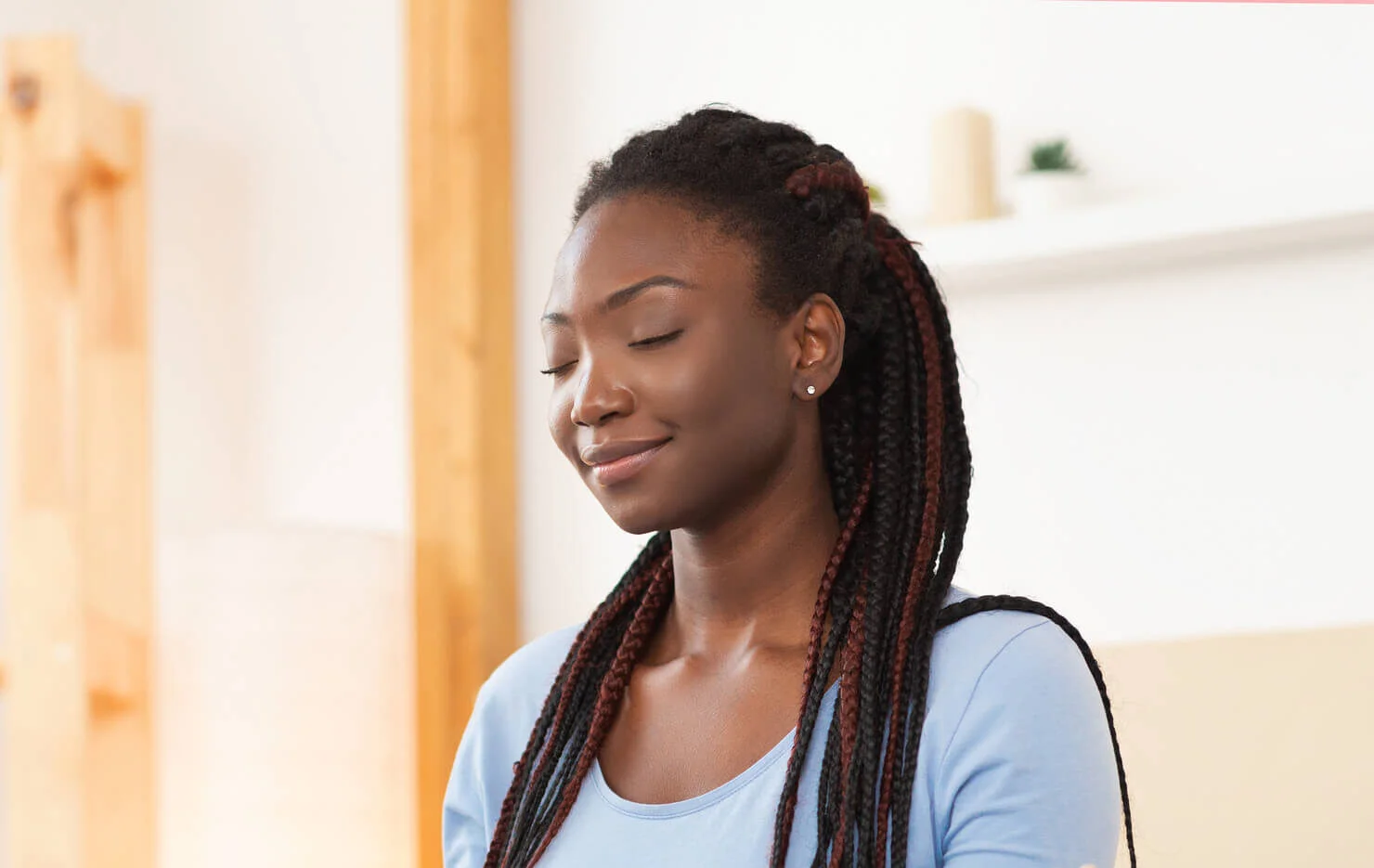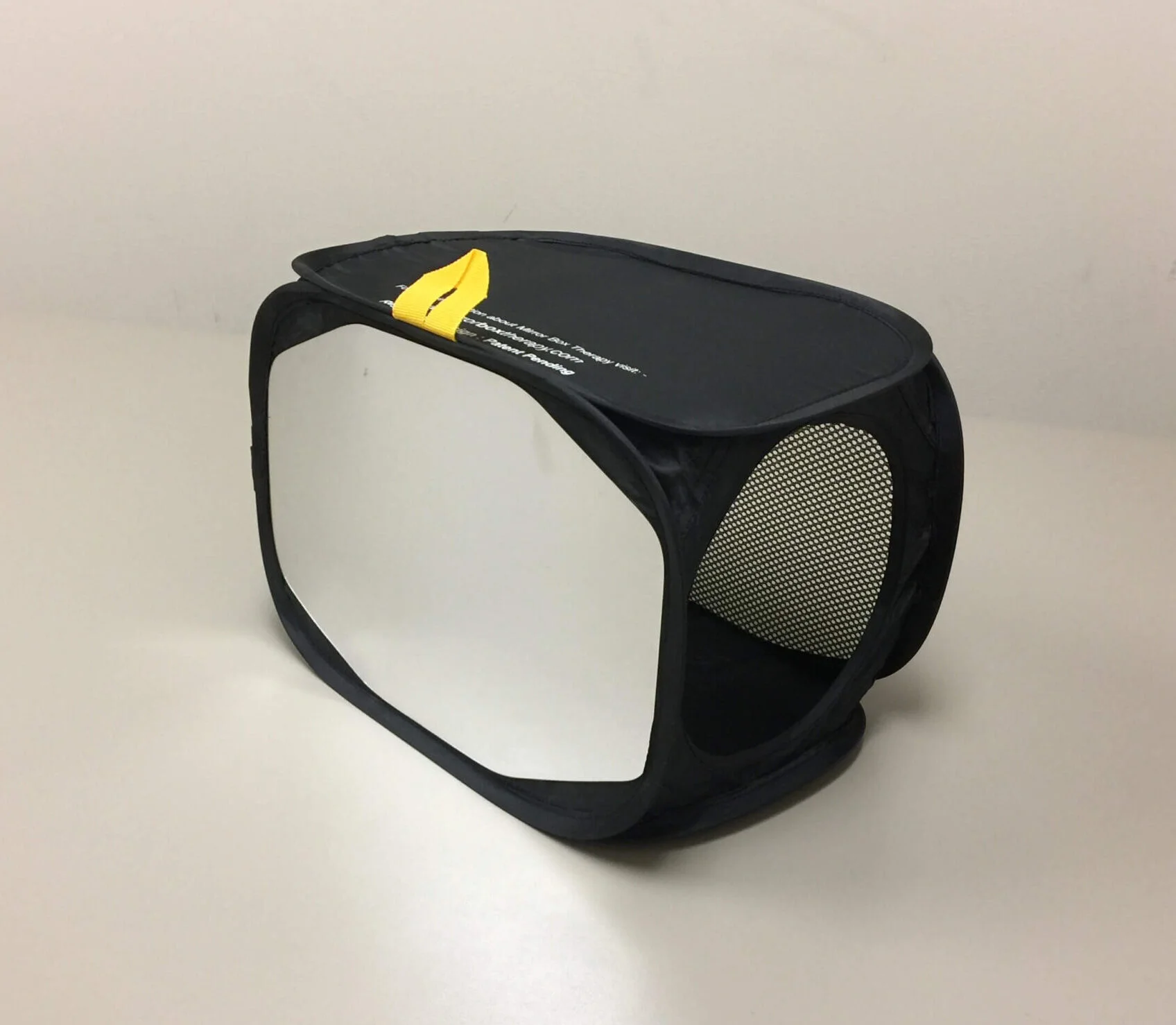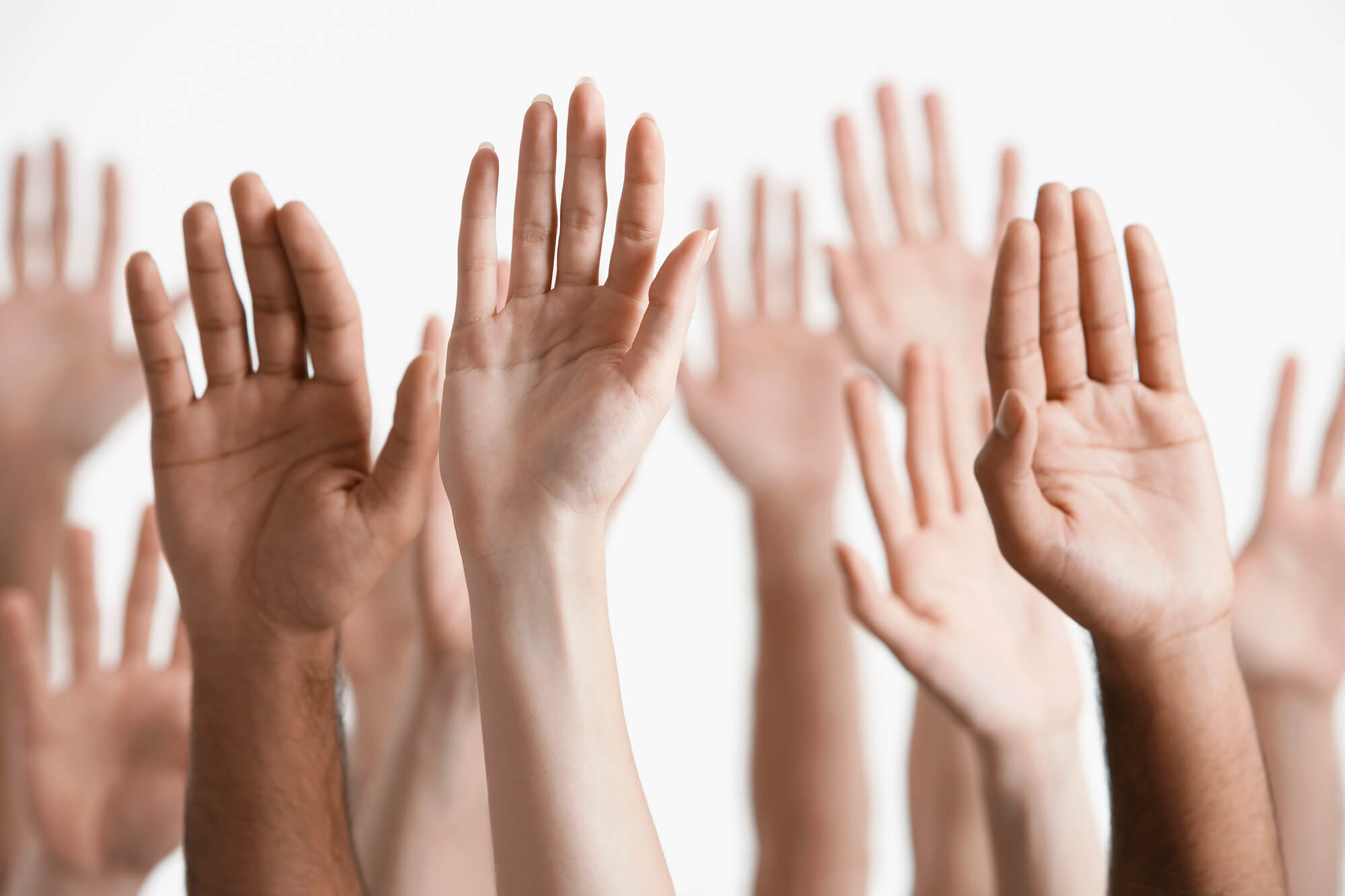What exercises are good for stroke patients with limited hand motion
“What exercises are good for stroke patients with limited hand motion?” is a frequently asked question by stroke survivors. This is understandable, as impaired movement of the arm and hand is a common problem affecting up to 85% of stroke survivors. Recovery of hand motion after stroke is a challenging and frustrating process. This is especially true if you have very limited, or no motion of your hand. In this article, I will discuss two evidence-based exercise techniques that can help improve hand and arm motion after a stroke.
Mental Practice

Example of a person performing mental practice.
Originally used in sports to improve athletic performance, Mental Practice is used in stroke rehabilitation as a training method to improve stroke recovery. Mental Practice is a technique that is a form of motor imagery training and requires repetitive cognitive rehearsal of physical activity or movement to improve the performance of the activity. In other words, you imagine yourself performing an activity to actually improve doing the activity.
Research has shown that mental practice exercises are good for stroke patients because they activate the same regions of the brain as the physical performance of the activity. This can help rewire the brain to promote movement of the hand and arm.
A 2020, Cochrane systematic review of ‘Mental Practice research titled ‘Mental practice for treating upper extremity deficits in individuals with hemiparesis after stroke.’, concluded “Our review of the available literature provided moderate-certainty evidence that mental practice, when added to other physical rehabilitation treatments, produced improved outcomes compared to use of the other rehabilitation treatment alone. Evidence to date shows improvements in arm function and arm movement.”
How To Get Started With Mental Practice
To perform Mental Practice effectively, there are certain steps that you should follow.
List of Steps for Mental Practice
Step 1
Find a quiet place free from distractions to perform Mental Practice. Relax and clear your mind. Try a few minutes of deep breathing to help you relax.
Step 2
Select an activity that is meaningful to you. Either because it is a necessity (ex. feeding yourself) or of interest to you. Meaningful activities make it easier to visualize the activity and provide motivation to practice more frequently.
Step 3
Break your chosen activity down into simple steps. For example, if you wanted to mentally practice feeding yourself, your steps might be:
- positioning your hand over a fork
- opening your hand to prepare to grasp the fork
- closing your hand and grasping the fork
- picking up food with the fork
- bringing the fork to your mouth
Step 4
Mentally visualize yourself performing your chosen activity. It is recommended to repetitively mentally practice both the individual steps of the activity and the full activity. You can visualize yourself in first-person performing the activity, or in the 3rd person like you are viewing yourself from outside your body. Make your visualizations as detailed as possible. Perform as many repetitions as possible during your session. It takes a lot of repetitions to rewire the brain.
Recommended Schedule: Try to perform Mental Practice for a minimum of 15 15-minute sessions with a goal of performing 30-minute sessions 5 days per week. However, you should stop treatment sessions when you become fatigued or experience any other discomfort.
Step 5
Reinforce your mental practice session.
After your mental practice is completed, it is a great time to try to physically practice the activity if you have active hand/arm motion. If you don’t have active motion or very limited motion, try using your other hand to passively move your affected hand and arm through the motions you just visualized.
The Pros and Cons of Mental Practice
Pros of Mental Practice
- Can be performed by most people
- Requires no special equipment
- Can be performed almost anywhere
- No dangerous side effects
- Research supports use
Cons of Mental Practice
- Some stroke survivors may have difficulty concentrating and/or performing detailed visualizations.
- Can be mentally fatiguing
Conclusion:
Mental Practice is a very good exercise for stroke patients with limited or no hand motion. It is safe, can be performed almost anywhere, it requires no special equipment, and research supports it use as part of a stroke recovery plan for improving hand and upper extremity motion and function.
Mirror Therapy
Mirror Therapy, sometimes referred to as mirror box therapy, is a therapeutic technique originally developed as a treatment for phantom limb pain in amputee patients. Similar to Mental Practice, Mirror Therapy is also considered a form of motor imagery training. During Mirror Therapy, a mirror is placed in front of the person receiving treatment creating the illusion of normal movements of the weak or paralyzed limb. It is most commonly used for the treatment of the hand and upper extremities, but it can also used in the treatment of the lower extremities.

Example of the premade mirror box.
How Does Mirror Therapy Work?
Research has found that the visual feedback provided by Mirror Therapy leads to activation of the same areas of the brain that are activated by physical performance. This has the potential to improve motor recovery. It has also been suggested that Mirror Therapy might prevent or reverse learned non-use of a limb. Although, the exact mechanisms of its benefits are not fully understood.
A 2018, Cochrane systemic review of Mirror Therapy research concluded “The results indicate evidence for the effectiveness of mirror therapy for improving upper extremity motor function, motor impairment, activities of daily living, and pain, at least as an adjunct to conventional rehabilitation for people after stroke”.
How To Get Started With Mirror Therapy
To perform Mirror Therapy, you will need a mirror box. A mirror box allows you to place your affected hand in the box out of view while looking at a mirror image of your unaffected hand. Mirror boxes can be purchased or made at home using a mirror and a box (a cardboard box for example).
The box must be large enough that your hand and wrist fully fit into it safely. You should not be able to see your hand or wrist once it is in the box. A mirror that is large enough to allow you to fully view your unaffected hand and wrist in the mirror should be attached to the side of the box. The mirror can be attached with glue or tape.
List of Steps for Mirror Therapy
Step 1
Find a quiet place free from distractions to perform Mirror Therapy. Relax and clear your mind. Try a few minutes of deep breathing to help you relax.
Step 2
Set up your mirror box.
Set up your mirror box on a flat surface such as a table. You will need enough room to fit your mirror box, and enough room to perform exercises using your unaffected hand. Your affected hand and wrist should be in the mirror box out of sight. The mirror should be close enough for you to fully view your unaffected hand.
Step 3
Eliminate distractions.
The immediate area around your mirror box should be uncluttered, with no distracting items in your view when you look in the mirror. If possible, you should remove any bracelets, rings, or watches from your hands that would distinguish your right from your left hand. Perform Mirror Therapy in a quiet environment to avoid distraction.
Step 4
Begin your Mirror Therapy session. Mirror Therapy sessions are more effective and tolerable if you plan out your exercises and activities in advance. If you are just starting with Mirror Therapy, start with basic hand and wrist movements before advancing to more complex activities.
A beginner Mirror Therapy session might include the following exercises:
- opening and closing the hand for 3 minutes
- touching the thumb to each finger for 3 minutes
- flexing and extending the wrist for 3 minutes
- spreading fingers apart then back together for 3 minutes
- turning your palm up, then down for 3 minutes
As you get more comfortable doing Mirror Therapy you can add more complex activities to your session such as picking up small objects, using a fork or spoon to pick up food, or any other activity you want to improve.
Remember, during the session you want to keep your focus on the mirror image of your unaffected hand. You can attempt to perform the same movements using your hand that is the box. But, resist the temptation to look in the box to see if your affected hand is moving! Your focus should remain on the mirror image.
Using a timer or stopwatch to keep track of your exercises and the length of your session is recommended. This allows you to focus on the movements in the mirror as opposed to counting repetitions.
Recommended Schedule: Try to perform mirror therapy for a minimum of 15 minutes per session with a goal of performing 30-minute sessions 5 days per week. However, you should stop treatment sessions when you become fatigued or experience any other discomfort.
The results indicate evidence for the effectiveness of mirror therapy for improving upper extremity motor function, motor impairment, activities of daily living, and pain, at least as an adjunct to conventional rehabilitation for people after stroke.
Holm Thieme, et al, / Mirror therapy for improving motor function after stroke. Cochrane Database Syst Rev. 2018
The Pros and Cons of Mirror Therapy
Pros of Mirror Therapy
- Can be performed by most people
- No dangerous side effects
- Convenient to perform
- Research supports use
Cons of Mirror Therapy
- Some stroke survivors may have difficulty concentrating or visual impairments that limit performance
- Can be mentally fatiguing and tedious
- Requires use of mirror box to perform
Conclusion:
Mirror Therapy is a very good exercise for stroke patients with limited or no hand motion. It is safe and can be performed almost anywhere, and research supports its use as part of a stroke recovery plan for improving hand and upper extremity motion and function. However, unlike Mental Practice, Mirror Therapy requires the use of a mirror box which makes it less convenient and can be an additional cost.
Summary
Both Mental Practice and Mirror Therapy exercises are good for stroke patients with limited hand motion. They both can be performed safely at home, are convenient to perform, and are supported by research for improving motor function of the hand and upper extremities. Regardless of which exercise you choose to perform; they both require a time commitment, consistency, and patience to be effective.


Disclaimer: The medical/health/fitness information provided on this site is provided for general information and educational purposes only and is not a substitute for professional advice. Accordingly, before taking any actions based on such information, we encourage you to consult with the appropriate professionals. THE USE OR RELIANCE OF ANY INFORMATION CONTAINED ON THE SITE IS SOLELY AT YOUR OWN RISK.